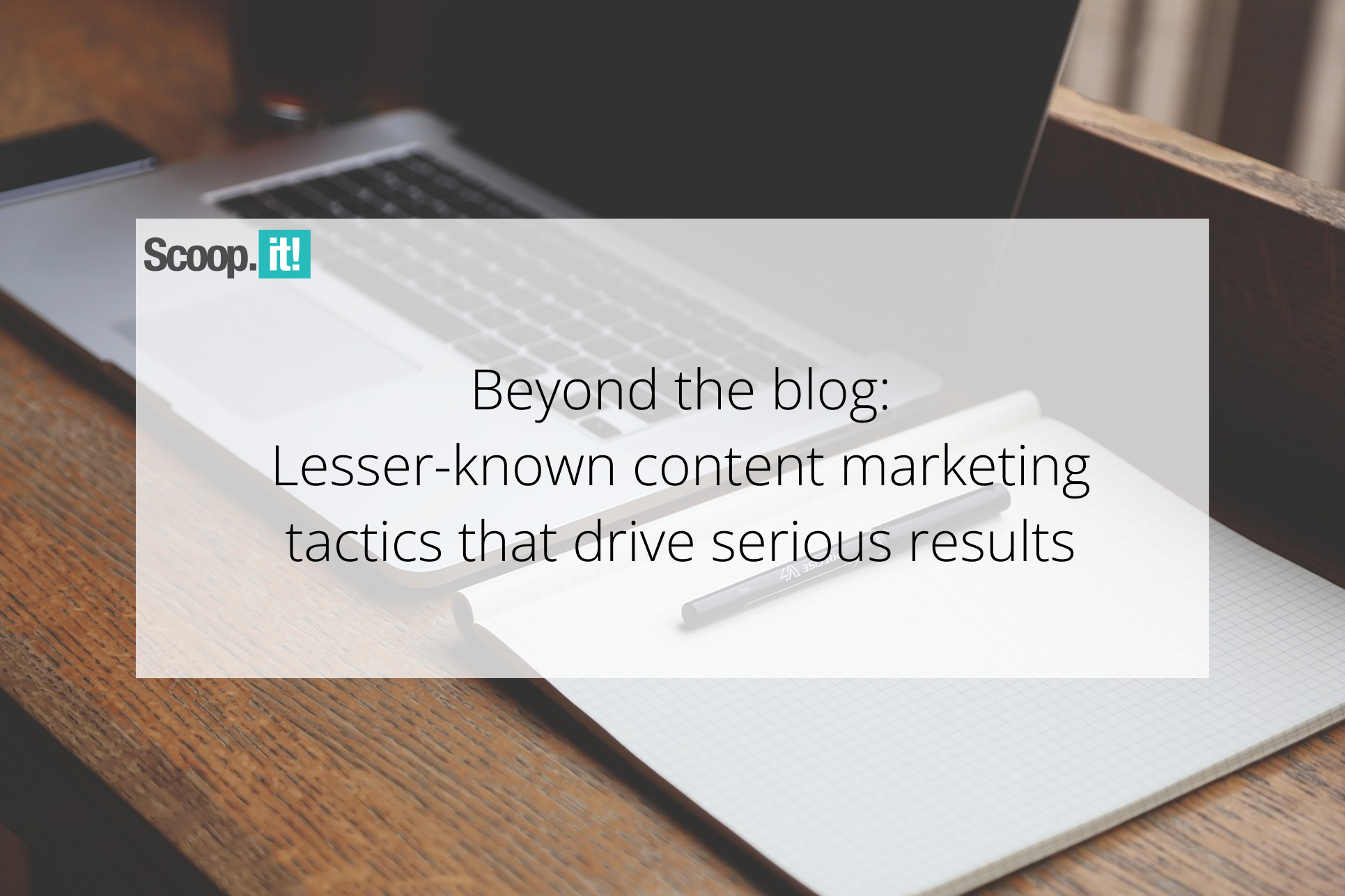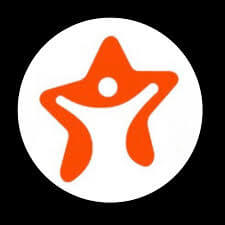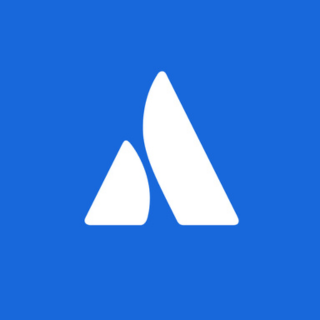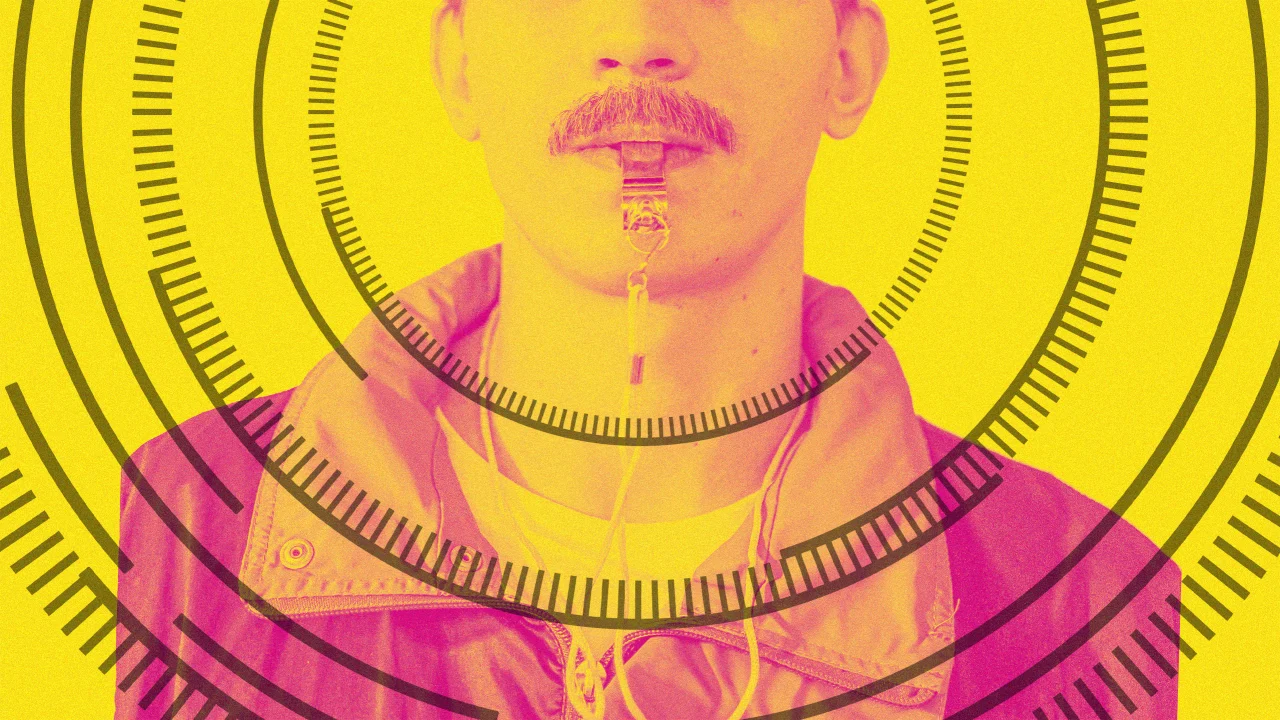Meet Project Fizzion, Coca-Cola’s big bet on an AI-powered design copilot
Back in the 1930s, Robert W. Woodruff, president of the Coca-Cola Co., would carry a red swatch in his wallet. Of course, it wasn’t just any red. It was Coca-Cola red. And so anywhere he went and encountered his brand—painted on a wall, wrapping a refrigerator—he would pull out the little swatch to check that it matched.Woodruff understood the importance of Coca-Cola’s brand equity as it expanded globally—a challenge that has only grown since, now that Coca-Cola sells 2.2 billion servings a day across 200 countries, 150 languages, and 30 million points of sale.But where Woodruff used a swatch, Coca-Cola’s design team has spent the past four years dreaming up a modern operational upgrade to its 400 pages of brand guidelines. Teaming with Adobe, it developed Project Fizzion. Trained specifically on Coca-Cola’s design logic, it’s a brand-managing AI that lives inside Adobe platforms like Photoshop and Illustrator, generates designs, and, most of all, helps keep designers across the globe brand-compliant as they dream up the next big campaign.In a design world that’s equally dependent upon and terrified of generative AI tools, Coca-Cola is clear that Fizzion is not about cost cutting via AI. As it’s integrating Fizzion globally, it’s doing so with no reduction in spending on brand campaigns. Instead, the company believes it’s charting a path forward that’s sustainable for creatives to drive better work and eliminate headaches under deadline.“Fizzion was never a design automation tool,” says Rapha Abreu, global VP of design at Coca-Cola. “It’s a creative copilot that is powered by AI but guided by designers.”Dreaming up a new AIWhen Abreu joined Coca-Cola in 2021, his design team—who spent countless hours in meetings explaining to external agencies that their seemingly great ideas broke brand guidelines—became almost philosophical in imagining another way forward. Given that any Coca-Cola campaign can include up to 5,000 separate assets, it had become nearly impossible to manage.“We had this kind of crazy idea,” Abreu recalls. “What if the Coca-Cola logo could learn what to do and what not to do?” They imagined software built so a designer literally couldn’t place the logo in the wrong context. And if that could work for the logo, maybe the same thing could be true for colors, typography, and imagery associated with Coca-Cola campaigns. It was an enticing thought that was ahead of its time, but only a little. Within two years, ChatGPT and other GenAI tools would drop upon the world to automate all sorts of tasks that never before seemed possible. [Image: Adobe/Coca-Cola]Companies including Adobe and Canva quickly whipped up GenAI tools that could suck in brand guidelines via PDF, then apply them to design templates. Sometimes they worked. And sometimes they didn’t. These sorts of guidelines can have trouble scaling to new, complex projects, and of course they do. Guidelines are just words trying to articulate visual relationships that are sometimes as instinctual as they are codified. Coca-Cola’s idea, led largely by its global head of AI design, Dom Heinrich, was to start with the images themselves, and to train a machine on Coca-Cola’s visual sensibility rather than a written rule set. Given that Coca-Cola and its partners were already working inside Adobe products, partnering with the company on building out such an AI system made a lot of sense.“It happens inside the tools that creatives already use,” says Abreu. “For us, that was the most important thing.”Together, the Adobe and Coca-Cola teams developed a different approach to training AI and deploying it at scale, which they call Project Fizzion (what seems like a most certain nod to Coca-Cola’s carbonated roots).[Image: Adobe/Coca-Cola]How does Fizzion learn?Many AIs are already trained on images, but Fizzion takes a slightly different approach. It’s trained more on visual design systems, stuffed full of actual Coca-Cola assets. This means Fizzion isn’t analyzing a century of soda campaigns in order to hallucinate a polar bear dressed as Santa Claus sharing a Coke. It’s specifically not generating imagery like Adobe’s own Firefly or DALL-E, but it will create a new variation on an existing design, mixing and matching Coca-Cola assets to do so.[Image: Adobe/Coca-Cola]Fizzion lives like Microsoft Copilot right inside Adobe software, considering the interdependencies of things on the screen.[Image: Adobe/Coca-Cola]“When you’re designing a visual identity system, the model should be able to learn, not just from the images but from the relationships between all the components, how the text maps to the images’ other elements that need to be part of it,” says Ash King, senior director of Firefly enterprise solutions at Adobe. “That allows [the designer] to test various aspect ratios, free-form.”Fizzion can see the canvas a designer is working on in real time, complete with the positioning of logos, imagery, and typefaces. The AI learns from Coca-Cola’s own desi
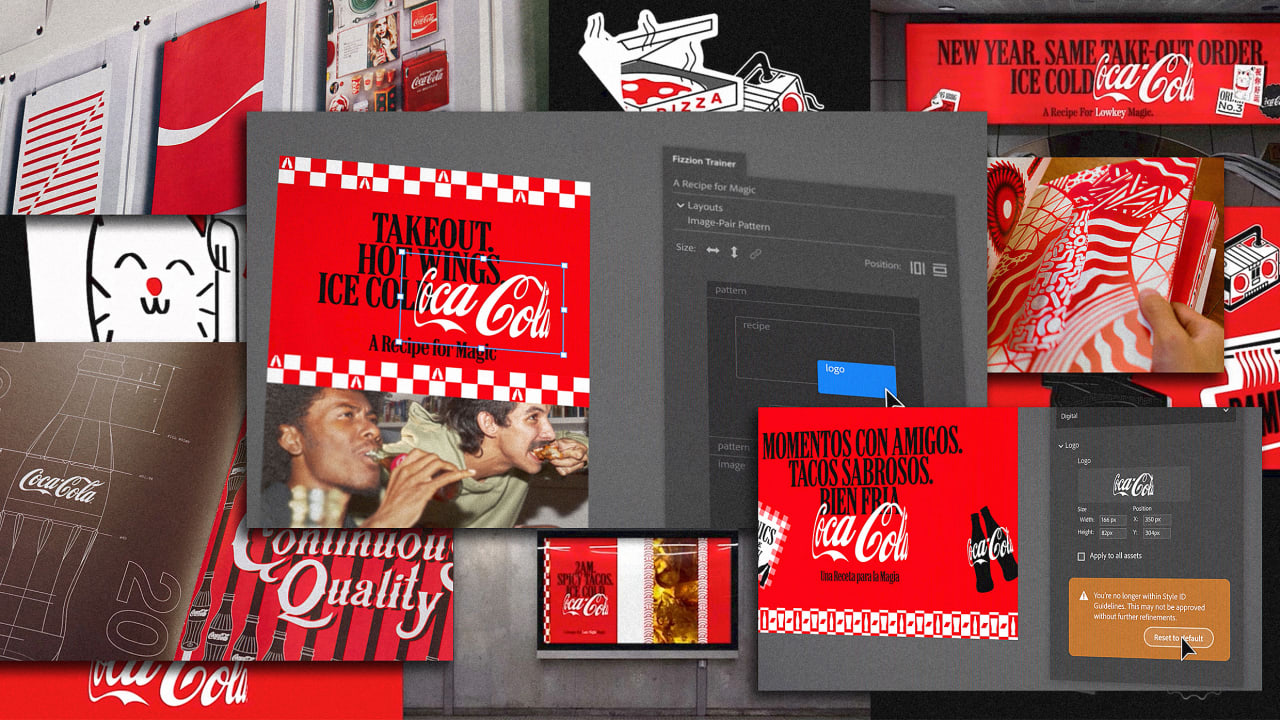
Back in the 1930s, Robert W. Woodruff, president of the Coca-Cola Co., would carry a red swatch in his wallet. Of course, it wasn’t just any red. It was Coca-Cola red. And so anywhere he went and encountered his brand—painted on a wall, wrapping a refrigerator—he would pull out the little swatch to check that it matched.
Woodruff understood the importance of Coca-Cola’s brand equity as it expanded globally—a challenge that has only grown since, now that Coca-Cola sells 2.2 billion servings a day across 200 countries, 150 languages, and 30 million points of sale.
But where Woodruff used a swatch, Coca-Cola’s design team has spent the past four years dreaming up a modern operational upgrade to its 400 pages of brand guidelines. Teaming with Adobe, it developed Project Fizzion. Trained specifically on Coca-Cola’s design logic, it’s a brand-managing AI that lives inside Adobe platforms like Photoshop and Illustrator, generates designs, and, most of all, helps keep designers across the globe brand-compliant as they dream up the next big campaign.
In a design world that’s equally dependent upon and terrified of generative AI tools, Coca-Cola is clear that Fizzion is not about cost cutting via AI. As it’s integrating Fizzion globally, it’s doing so with no reduction in spending on brand campaigns. Instead, the company believes it’s charting a path forward that’s sustainable for creatives to drive better work and eliminate headaches under deadline.
“Fizzion was never a design automation tool,” says Rapha Abreu, global VP of design at Coca-Cola. “It’s a creative copilot that is powered by AI but guided by designers.”
Dreaming up a new AI
When Abreu joined Coca-Cola in 2021, his design team—who spent countless hours in meetings explaining to external agencies that their seemingly great ideas broke brand guidelines—became almost philosophical in imagining another way forward. Given that any Coca-Cola campaign can include up to 5,000 separate assets, it had become nearly impossible to manage.
“We had this kind of crazy idea,” Abreu recalls. “What if the Coca-Cola logo could learn what to do and what not to do?” They imagined software built so a designer literally couldn’t place the logo in the wrong context. And if that could work for the logo, maybe the same thing could be true for colors, typography, and imagery associated with Coca-Cola campaigns.
It was an enticing thought that was ahead of its time, but only a little. Within two years, ChatGPT and other GenAI tools would drop upon the world to automate all sorts of tasks that never before seemed possible. 
Companies including Adobe and Canva quickly whipped up GenAI tools that could suck in brand guidelines via PDF, then apply them to design templates. Sometimes they worked. And sometimes they didn’t. These sorts of guidelines can have trouble scaling to new, complex projects, and of course they do. Guidelines are just words trying to articulate visual relationships that are sometimes as instinctual as they are codified.
Coca-Cola’s idea, led largely by its global head of AI design, Dom Heinrich, was to start with the images themselves, and to train a machine on Coca-Cola’s visual sensibility rather than a written rule set. Given that Coca-Cola and its partners were already working inside Adobe products, partnering with the company on building out such an AI system made a lot of sense.
“It happens inside the tools that creatives already use,” says Abreu. “For us, that was the most important thing.”
Together, the Adobe and Coca-Cola teams developed a different approach to training AI and deploying it at scale, which they call Project Fizzion (what seems like a most certain nod to Coca-Cola’s carbonated roots).
How does Fizzion learn?
Many AIs are already trained on images, but Fizzion takes a slightly different approach. It’s trained more on visual design systems, stuffed full of actual Coca-Cola assets. This means Fizzion isn’t analyzing a century of soda campaigns in order to hallucinate a polar bear dressed as Santa Claus sharing a Coke. It’s specifically not generating imagery like Adobe’s own Firefly or DALL-E, but it will create a new variation on an existing design, mixing and matching Coca-Cola assets to do so.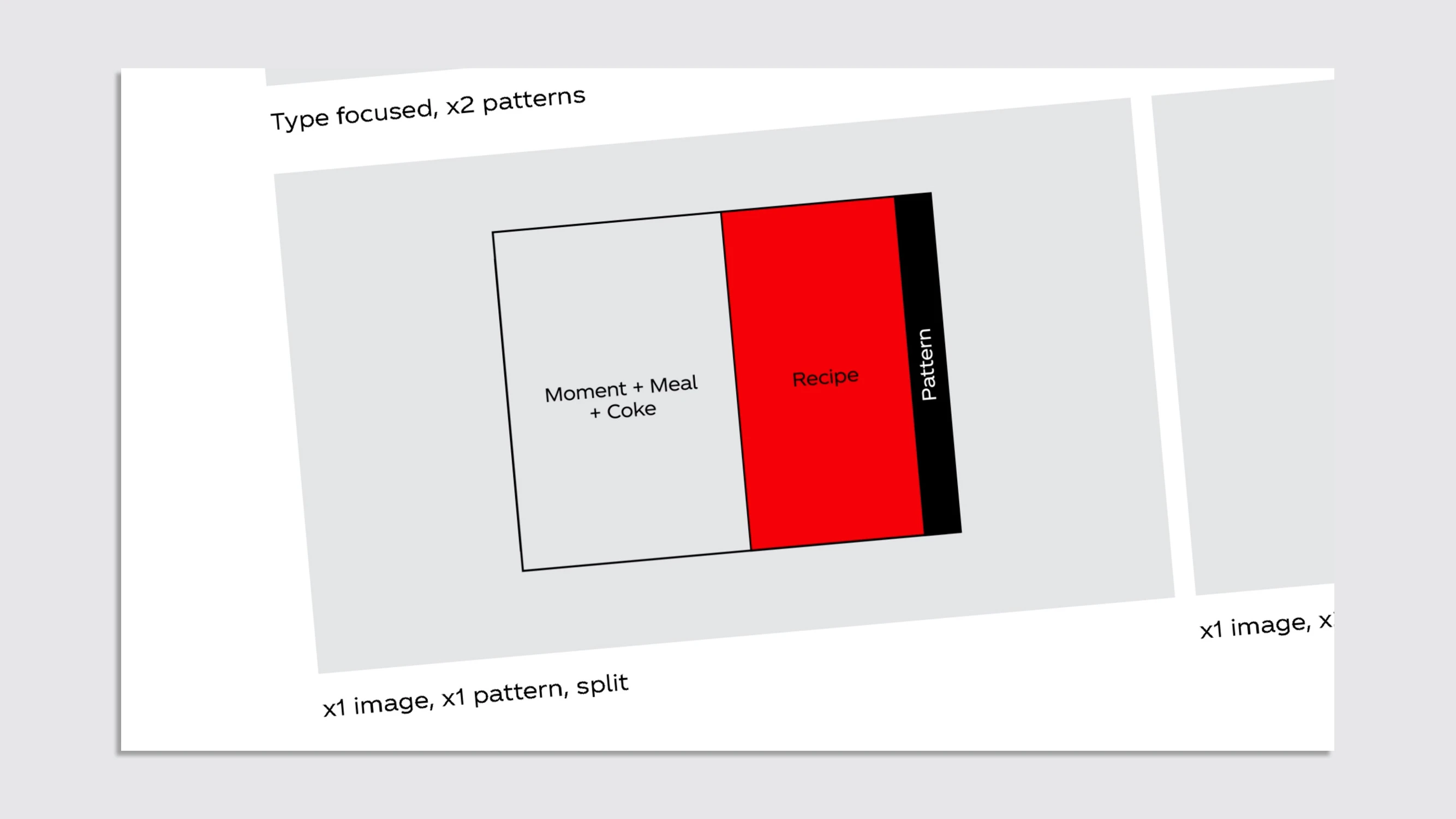
Fizzion lives like Microsoft Copilot right inside Adobe software, considering the interdependencies of things on the screen.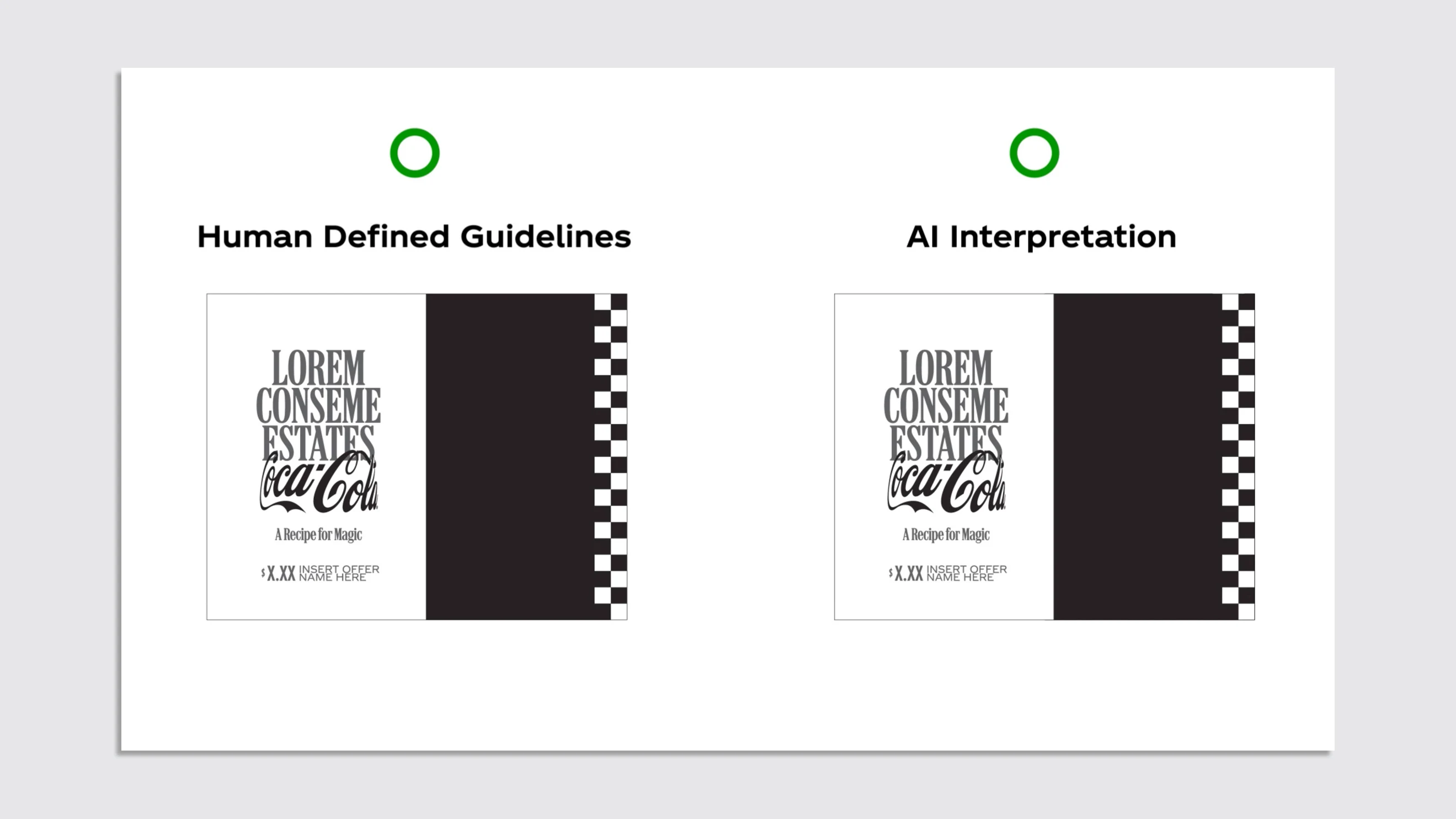
“When you’re designing a visual identity system, the model should be able to learn, not just from the images but from the relationships between all the components, how the text maps to the images’ other elements that need to be part of it,” says Ash King, senior director of Firefly enterprise solutions at Adobe. “That allows [the designer] to test various aspect ratios, free-form.”
Fizzion can see the canvas a designer is working on in real time, complete with the positioning of logos, imagery, and typefaces. The AI learns from Coca-Cola’s own designers only when a project is finalized. Once a designer has a product they like—and knows works with brand standards—they save it as what they call a Style ID that adds to the AI’s knowledge. That’s basically the visual logic of one Cola-Cola campaign. At this time Fizzion also collects all necessary brand assets for that campaign so that it can incorporate them perfectly whenever necessary. (In other words, Fizzion is pulling the Coca-Cola logo fresh every time, rather than dreaming up what it’s supposed to look like from old references.)
This is how Fizzion is trained to learn new styles. (It also incorporates background from Coca-Cola’s 400-page brand guidelines, via Adobe Firefly.) From there, Fizzion sits atop a global production pipeline that allows partners to tweak the visual formula without breaking it.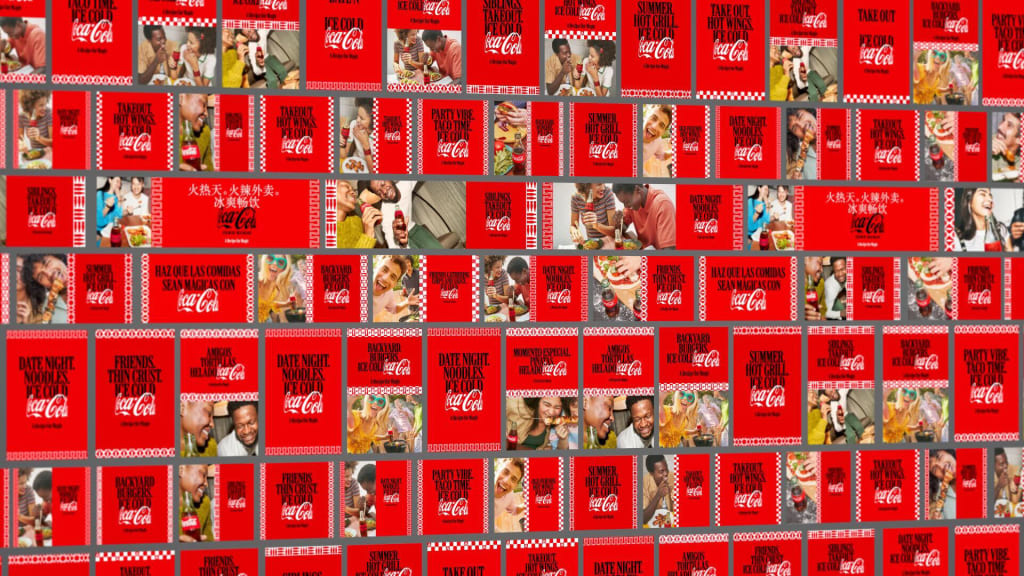
How teams across Coca-Cola use Fizzion
Building a marketing campaign in Fizzion can start with a prompt to generate—something like “Coca-Cola polar bears on the ocean”—or with a blank canvas as Fizzion watches along.
At the very top of the stack, the Coca-Cola design team has full access to build or alter anything across the brand that it wants. Partner agencies that Coke hires to make ads have more limitations. They can generate a new aspect ratio for a campaign on demand, and the AI will piece it all together. But if they want to stretch the logo—real bad—Fizzion won’t let them. However, they can send that change as a request to Coca-Cola proper through the platform to get approval (saving a meeting). 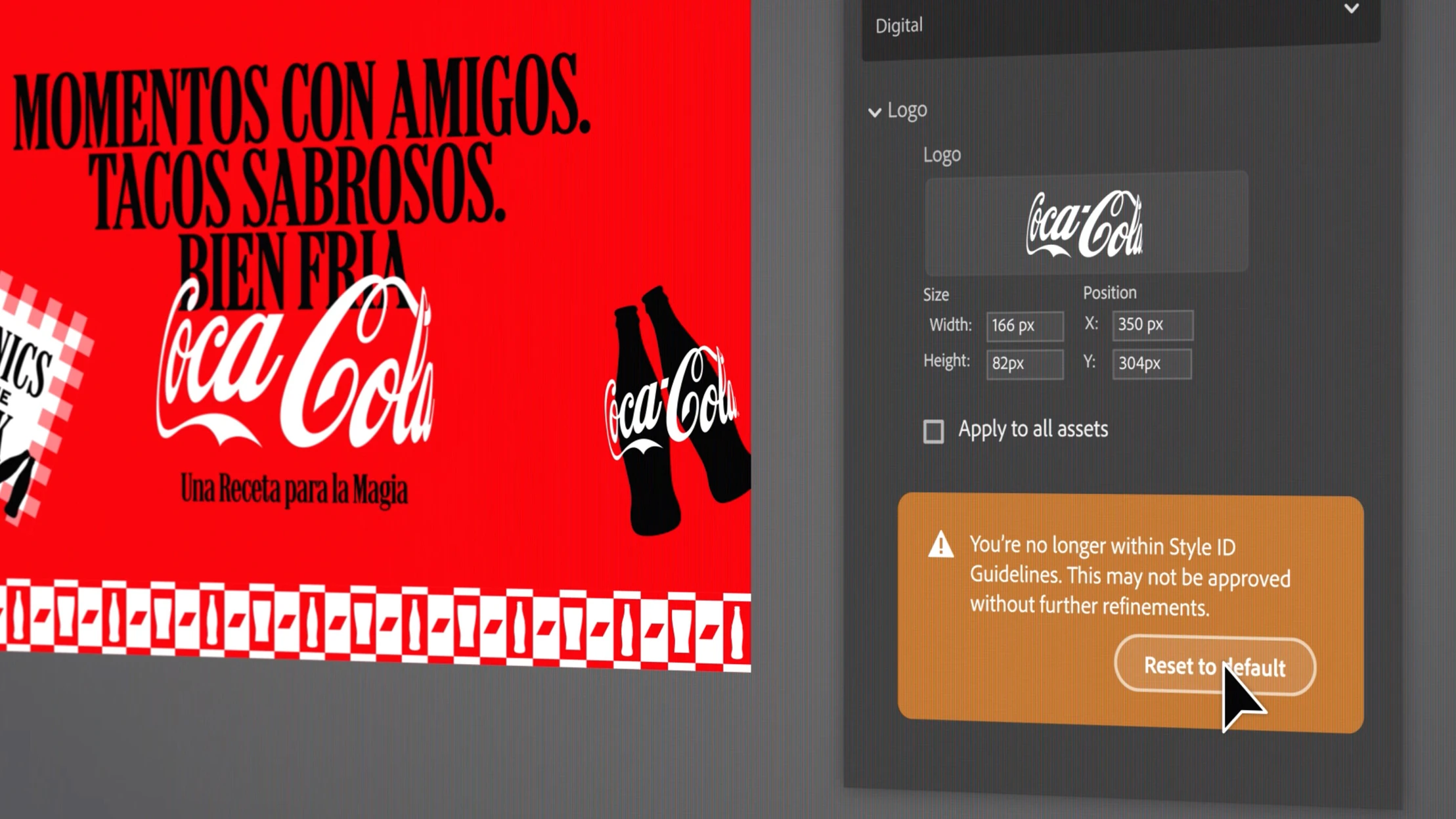
As design teams go down the chain from America to local markets, more and more of the design process becomes about localization. These teams have the least amount of access to tweak a campaign—certain assets and layers may be locked—though they can still make requests up the chain. This might sound controlling (and of course to an extent Coca-Cola is very much controlling its brand). But the design team argues that having these brand guidelines integrated into design tools is ultimately more freeing for design partners.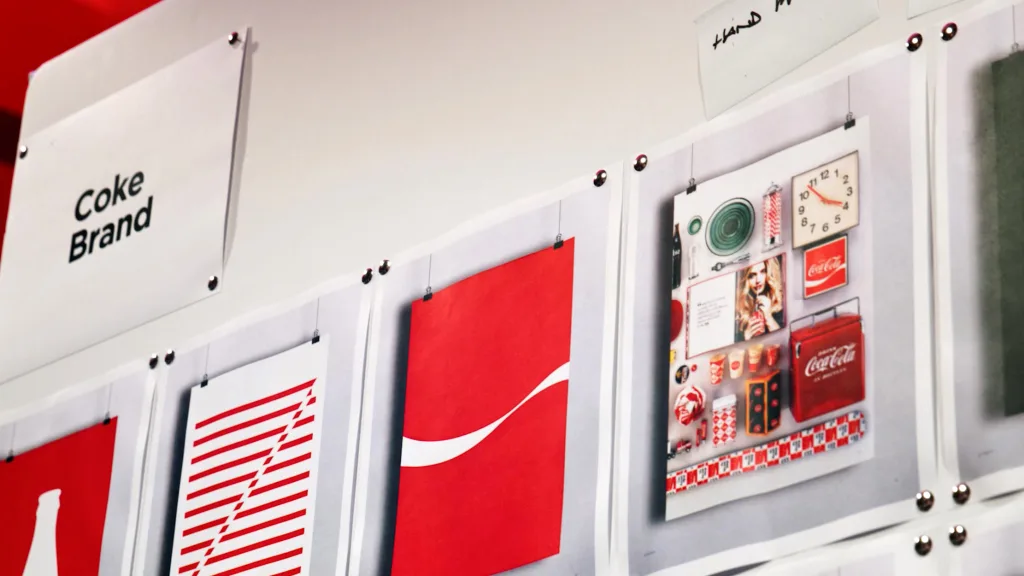
“One thing that we speak a lot internally about this global system is that we need to help designers and creatives downstream do the right thing, right. So it cannot be a burden for them to try to be compliant with the brand,” Abreu says. “We need to make this as easy as possible.”
However, with kerning off the table, Coca-Cola argues that it leaves time for creatives to focus on everything else about a campaign: “storytelling, having ideas, making sure cultural nuance is applied, and [focusing on] emotional resonance,” Abreu says. 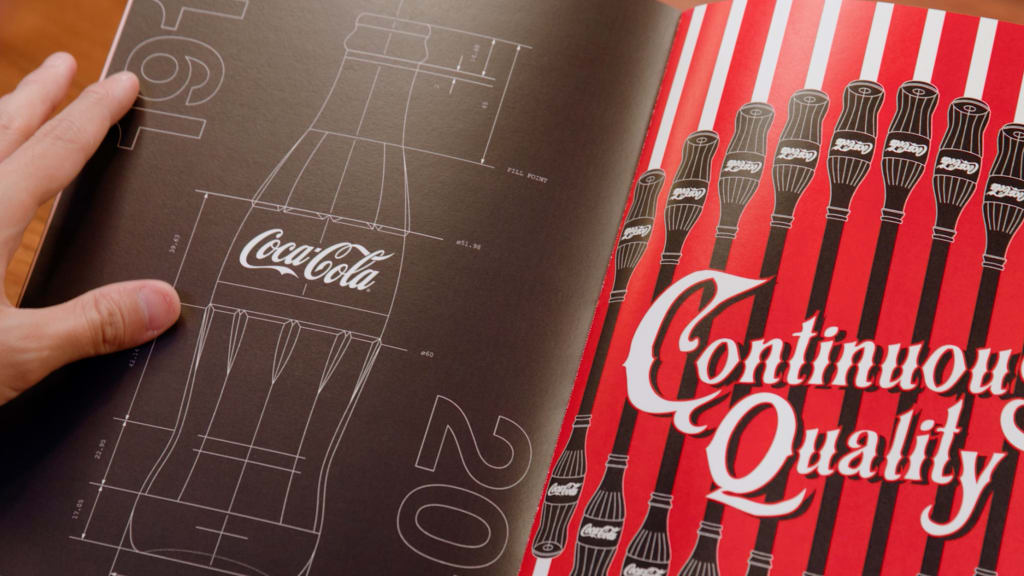
Indeed, despite all of the checks and balances in the system, Coca-Cola’s designers are hoping that their creative partners continue to push back. In fact, they are depending on it, as that’s the only way they believe a brand can grow and evolve.
“If everybody builds on the same LLM, it just follows the same kind of way of interacting with an AI. We will just get a lot of the same,” says Heinrich. “We believe that designers need to be more in charge. . . . [They need to] be more creative in order to push the AI to the next level. The better you are at your job and the better you push, the better the outputs are and the more uniqueness comes from them.”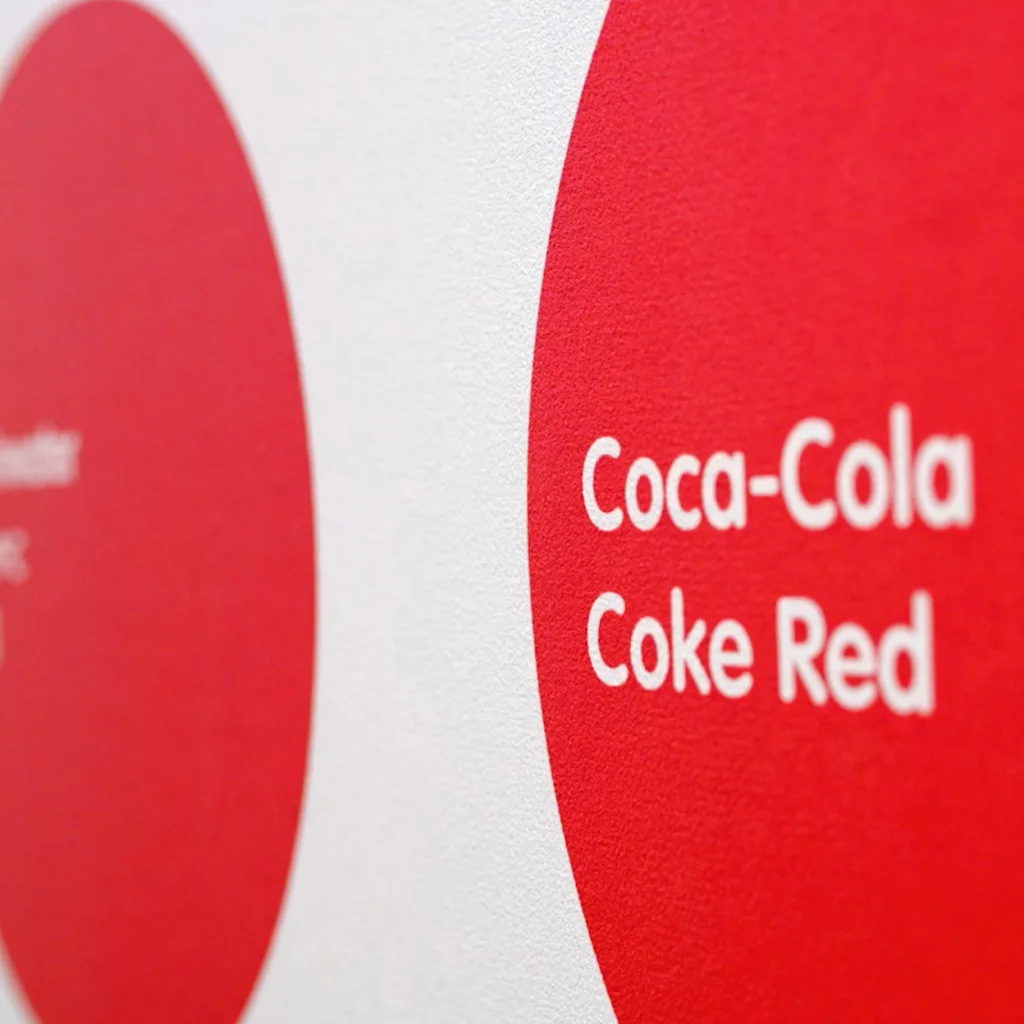
For now, Coca-Cola is all-in with Fizzion. Since March of this year, every partner agency that’s building a campaign is required to create it with a Fizzion Style ID. And the Coca-Cola team believes Fizzion is so efficient at handling design standards that its 400-page PDF guidelines will fall out of use.
As for Adobe, it’s built a powerful design tool that, no doubt, many companies using its platform would benefit from. However, it’s also been designed to meet the gargantuan needs of Coca-Cola, meaning it’s probably too big and multitiered for many teams to adopt efficiently.
“Few companies are thinking on the scale as Coke is right now. So we need to take a future-forward look at this and figure out how it’s best applied,” says King. “We like to start with the use cases. We like to have something very concrete that a customer wants to do and then build backwards into what we’re [shipping].”







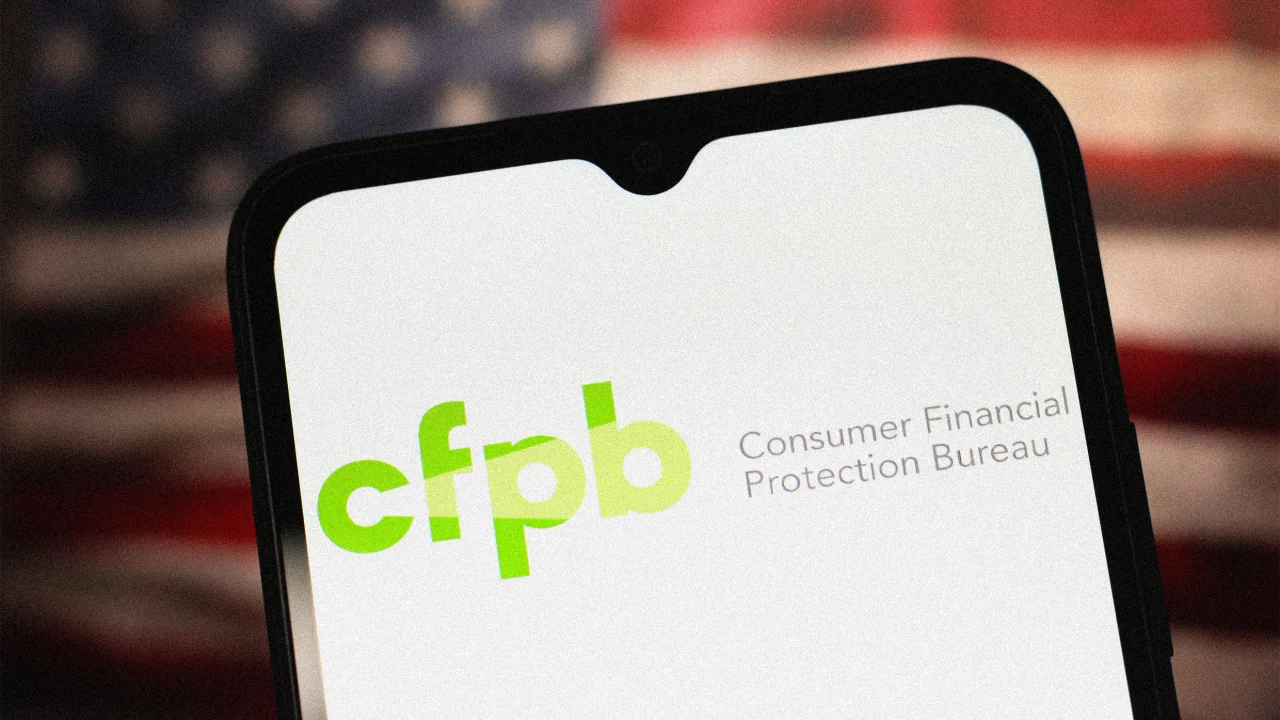
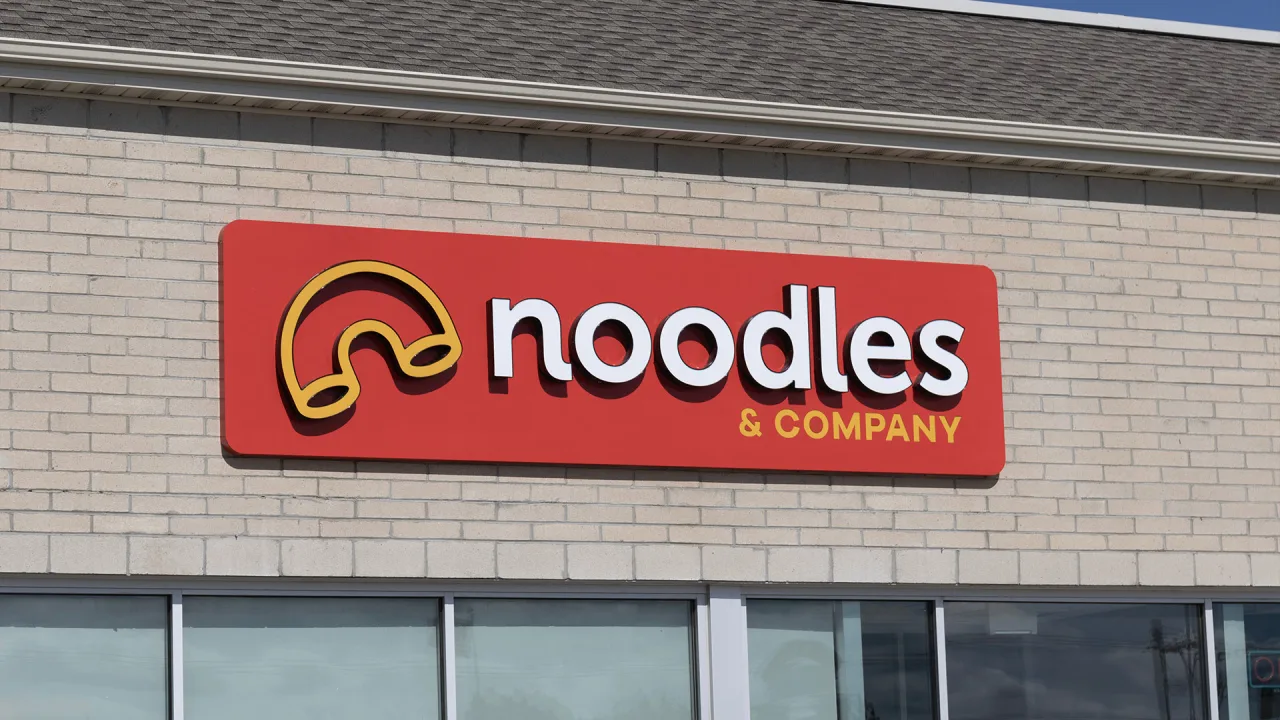

















































































































![Are AI Chatbots Replacing Search Engines? AI vs Google [New Research]](https://www.orbitmedia.com/wp-content/uploads/2025/05/How-often-are-we-using-AI-chatbots_.webp)

